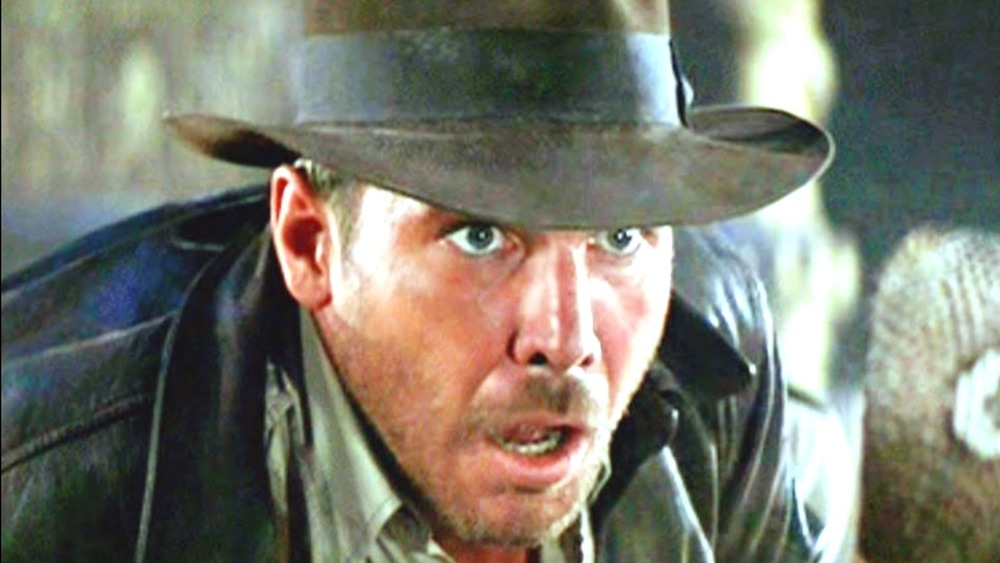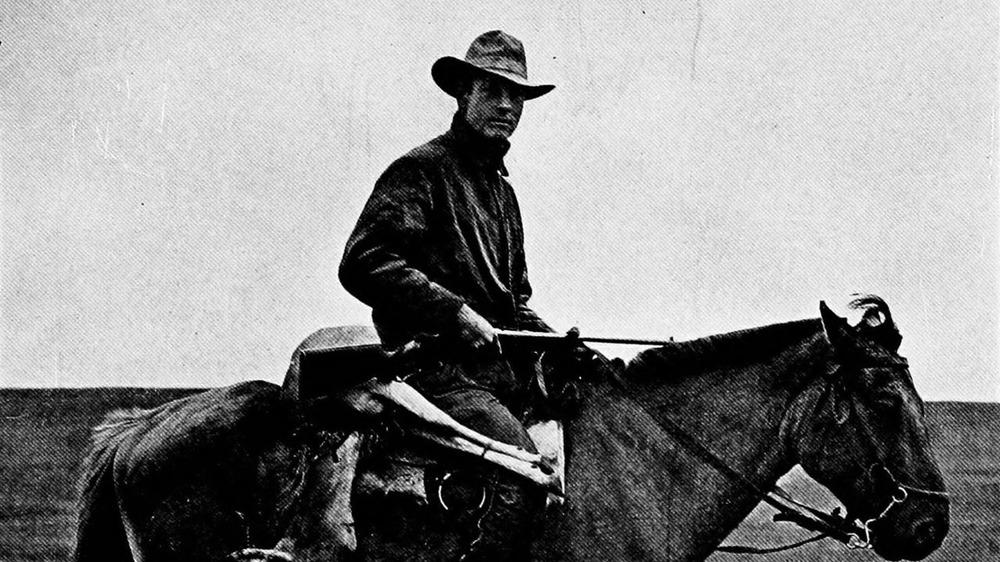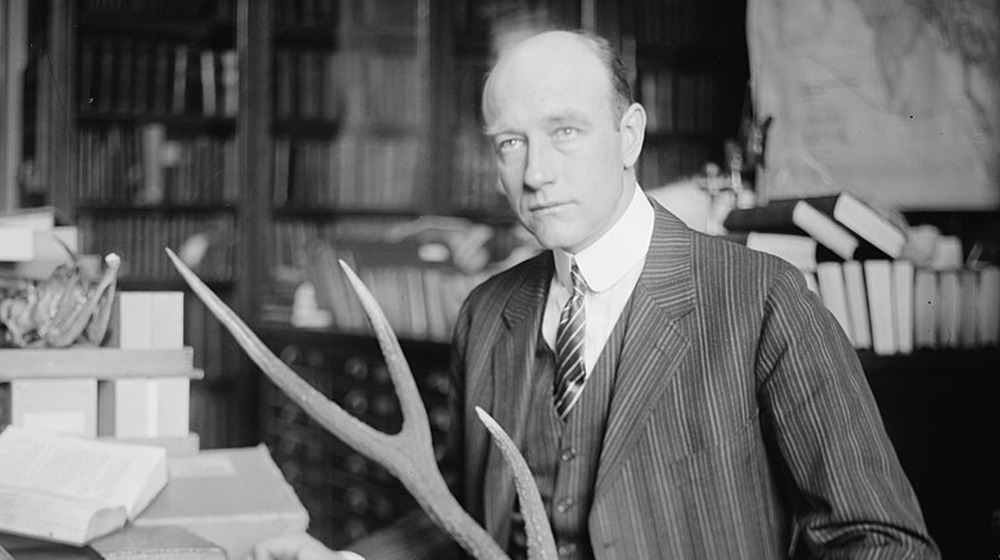What Happened To The Real-Life Indiana Jones?
"Archeology is the search for fact, not truth," we're told by the fictional Doctor Henry Jones, Jr. during a class lecture at Marshall College, a university which doesn't exist. In the spirit of this declaration, let's look at the facts: Indiana Jones was an amalgamation of decades of archetypal adventurers, combining the qualities of characters like Allan Quartermain, Professor Challenger, and — no kidding — Scrooge McDuck (via CBR).
There were also nonfictional inspirations with suspiciously close connections to Indy. The character's legendary place in the pop culture landscape has led inquisitive minds to draw comparisons between academia's least insurable educator and the actual adventurers who might have ignited his creation, and one name tends to pop up more than any other: Doctor Roy Chapman Andrews of the American Museum of Natural History.
There are plenty of parallels between Jones and his real life counterpart. Born in 1884, Andrews was an explorer and naturalist who never saw a specimen that he didn't want in a museum. Across the decades, he journeyed across the globe in search of a better understanding of the past, writing extensively about his expeditions and capturing the imaginations of readers around the world. His discoveries changed the way that researchers looked at the origins of human life, while simultaneously flipping the script on our understanding of prehistoric animal behavior.
And you know what else? He had a hat. A very cool hat.
Roy Chapman Andrews: Jonesing for adventure
Andrews' story is a prototypical tale of American gumption and tenacity, with a peppering of the macabre for a little extra kick. As a kid growing up in Beloit, Wisconsin, he explored the area's forests and taught himself to perform taxidermy, a skill set that he'd use to fund his college education. His dream was to work at the American Museum of Natural History, and he pursued his goal with astonishing single-mindedness, taking work at the institution as a janitor when no other positions were available.
Working his way from the ground up, Andrews scrubbed the floors of the museum's taxidermy department while at the same time acquiring specimens for its exhibits. As if pulling double-duty as a janitor and a professional dead animal glow-up artist wasn't impressive enough, he nabbed himself a Master's degree from Columbia University at the same time, then went on to become one of the early members of The Explorers Club, an organization for pedigreed adventurers whose members would go on to achieve a bevy of historic firsts. Edmund Hillary and Tenzing Norgay were both on the club's roll, as were the first men to reach both the North and South Poles.
But did they name the dog Roy?
Through his association with both The Explorers Club and the American Museum of Natural History, Andrews spent the majority of his adult life traveling the world, with a particular interest in paleontological expeditions to Asia. He and his team made breathtaking discoveries, including some of the first fossilized dinosaur eggs on record. More than any of that, though, he pioneered a new and noble artform: the listicle. In his 1926 book "On the Trail of Ancient Man: A Narrative of the Field Work of the Central Asiatic Expeditions," Andrews outlined the top ten ways that he'd almost been killed in the field, including times when he was "charged by a wounded whale," "nearly eaten by wild dogs," a pair of "close calls when I fell over cliffs," and — most relevantly — the occasion when he was "nearly caught by a huge python." You read that right: It had to be snakes.
In the end, it's hard to know if it was the years or the mileage that caught up with Andrews. He retired in 1942 and continued to write about his adventures, penning 13 books over the next 17 years. At age 76, he died of heart failure. In a front-page story, the New York Times reported that he died at Carmel, California's Peninsula Community Hospital on March 11, 1960, just when he was getting interesting.


